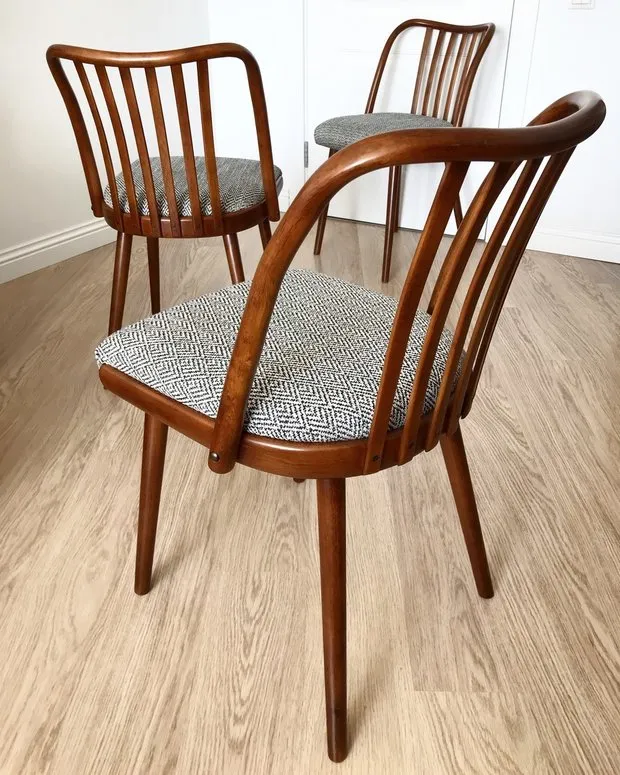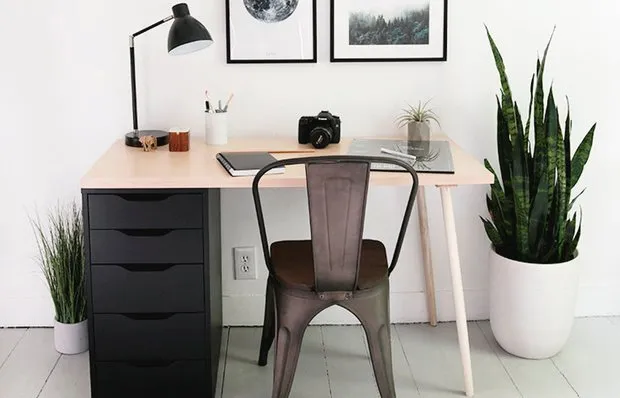There can be your advertisement
300x150
Refurbishing Old Furniture: Step-by-Step Guide + Photos
With Stoolstory, we share a step-by-step guide to restoring old furniture. We teach how to process wood and reupholster furniture using a classic, beloved chair as an example. You can apply this principle to reupholster your favorite sofa or old armchair. Save it to bookmarks!
Tatyana Vorontsova — EXPERT, co-founder of the vintage furniture workshop Stoolstory
Start your experiment with a simple vintage model—perhaps a chair with a solid backrest, no carving, no bevels, and few decorative elements.
Check the furniture for strength—try rocking the joints. If they move, disassemble and re-glue the chair using professional wood glue and clamps.

If you don't settle for half-measures, thoroughly clean the surface of your chair—special tools like a cycle, sandpaper, and sanding machines will be needed. If you apply new finish over old lacquer, grease, and dirt that have accumulated over the past 50 years of furniture life, you won't get anything good.
After cleaning the piece to bare wood, proceed with staining—have you already decided what color it should be? Use any special wood stain.

Once the glue has set and the stain has dried, start the most interesting part—the application of the finish! This can be varnish or oil with wax for wooden furniture. Varnish is applied in several layers according to the instructions on the can, with intermediate sanding using fine sandpaper or other abrasive materials. This method is more complex to execute.
A simpler approach is oil and wax. Apply the oil and wax with a soft cloth a few times at intervals specified on the can until you're satisfied with the result.
Now for the seat—don't forget about it! Remove any remnants of old upholstery and filler. Use dense foam—35 density or higher. Density is important to ensure the seat retains its shape after a month and the upholstery doesn't look like a deflated bubble.
Cut the foam slightly larger than the seat, place it on a plywood template, and cover the top with a piece of synthetic fabric.

Upholster the seat with fabric. The fabric should be furniture-grade—it will last much longer. Secure it with a furniture stapler and clips.
Beauty in details: cover the bottom with spunbond or another attractive fabric using the same stapler.
Assemble the frame and seat. The chair is ready!
In the 'How to Make' section, we regularly share successful ideas.
Subscribe to our YouTube channel for more interesting content!
More articles:
 5 Cozy Bedrooms from This Month's Projects
5 Cozy Bedrooms from This Month's Projects 10 Years of Renovation: How a Family Updated an Old House by Themselves
10 Years of Renovation: How a Family Updated an Old House by Themselves Make a Scandinavian Style Table from IKEA Cabinet Yourself? Easy!
Make a Scandinavian Style Table from IKEA Cabinet Yourself? Easy! How to Store Clothes + 9 More Tips for Kids' Room Design from IKEA
How to Store Clothes + 9 More Tips for Kids' Room Design from IKEA How to Create a Loft Without a Designer: 5 Secrets
How to Create a Loft Without a Designer: 5 Secrets How to Use a Garden Plot to the Maximum: Experts' Tips
How to Use a Garden Plot to the Maximum: Experts' Tips Cottage in Stockholm in Country Style
Cottage in Stockholm in Country Style How to Care for Garden Furniture on the Dacha to Make It Last Longer
How to Care for Garden Furniture on the Dacha to Make It Last Longer